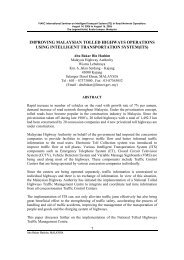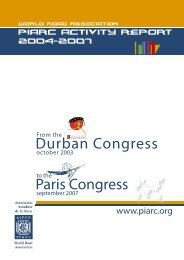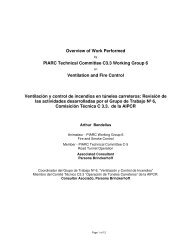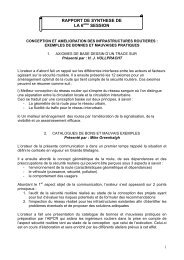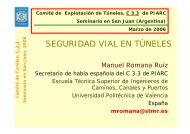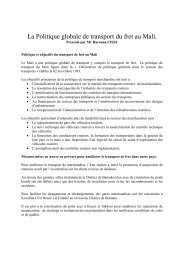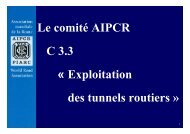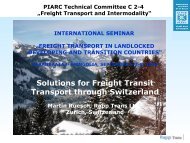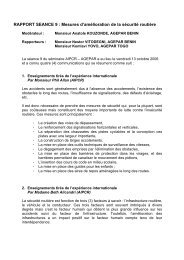innovative concepts and new technologies for regional multi
innovative concepts and new technologies for regional multi
innovative concepts and new technologies for regional multi
Create successful ePaper yourself
Turn your PDF publications into a flip-book with our unique Google optimized e-Paper software.
International Seminar on ITS<br />
in Road Network Operations<br />
in these regions face many challenges. Continued growth in population, employment <strong>and</strong> trade<br />
has led to the placement of increasing dem<strong>and</strong>s on the transportation system, challenging the<br />
efficiency of the network. Inefficient movement of people <strong>and</strong> goods reduces productivity,<br />
wastes energy, increases emissions, compromises safety, <strong>and</strong> threatens the quality of life.<br />
As these large metropolitan ‘cities’ often attract a large portion of their country’s respective total<br />
population <strong>and</strong> jobs, they typically extend over large geographical areas, administered by<br />
<strong>multi</strong>ple jurisdictional agencies. Each of these jurisdictional agencies may (or may not) be<br />
implementing the appropriate solutions, such as centralized traffic signal control systems.<br />
In the past, these traditional ITS solutions have proven to demonstrate significant benefits (e.g.,<br />
from the coordination of traffic signals, etc.), <strong>and</strong> this local jurisdictional approach has served the<br />
individual municipalities <strong>and</strong> jurisdictional agencies reasonably well. However, with the<br />
continued growth of these large metropolitan areas, there is a growing need <strong>for</strong> seamless<br />
transportation links that efficiently move both people <strong>and</strong> goods across local jurisdictional<br />
boundaries via <strong>multi</strong>ple transportation modes. A traveller sees the transportation system as one<br />
integrated network that serves all modes. To manage the network effectively <strong>and</strong> in a manner<br />
that will satisfy the ‘customers’, a <strong>multi</strong>-modal, <strong>regional</strong> approach is required. And in<br />
implementing <strong>regional</strong> transportation strategies, there is also typically the need to develop <strong>and</strong><br />
implement solutions that are capable of integrating with the local jurisdictions’ existing legacy<br />
systems.<br />
2



